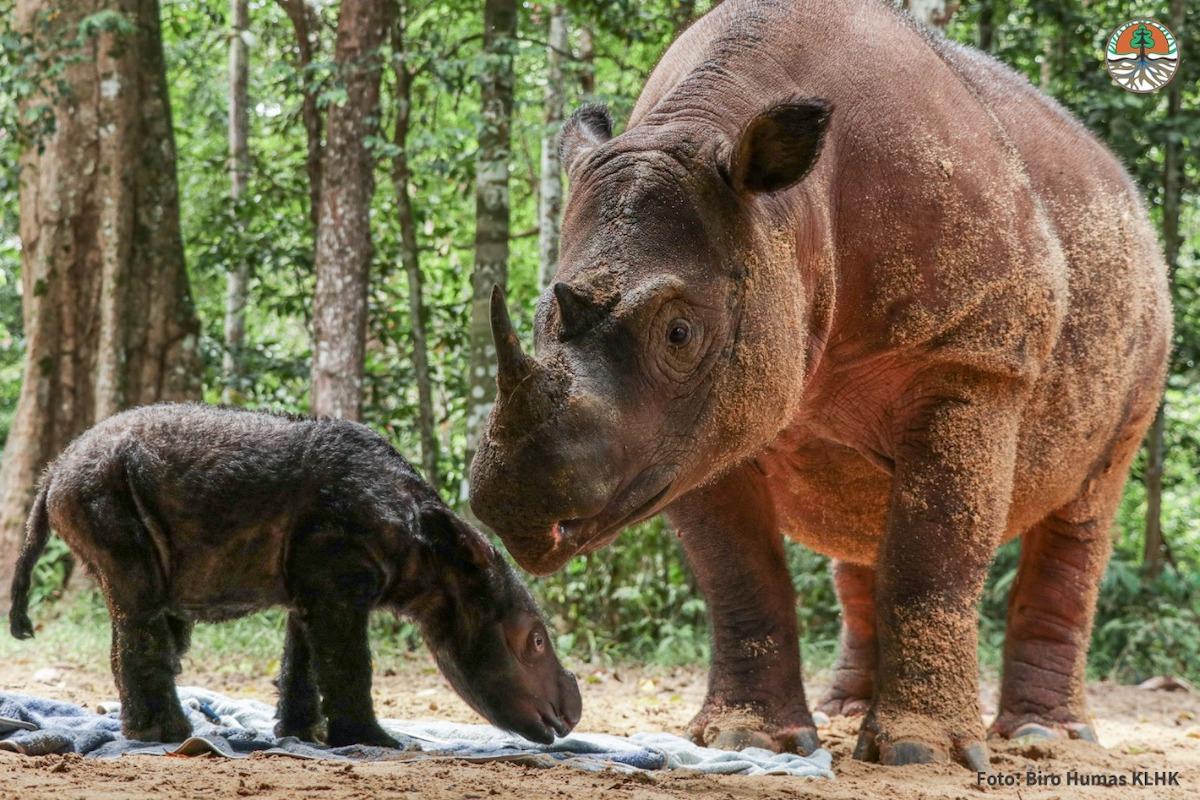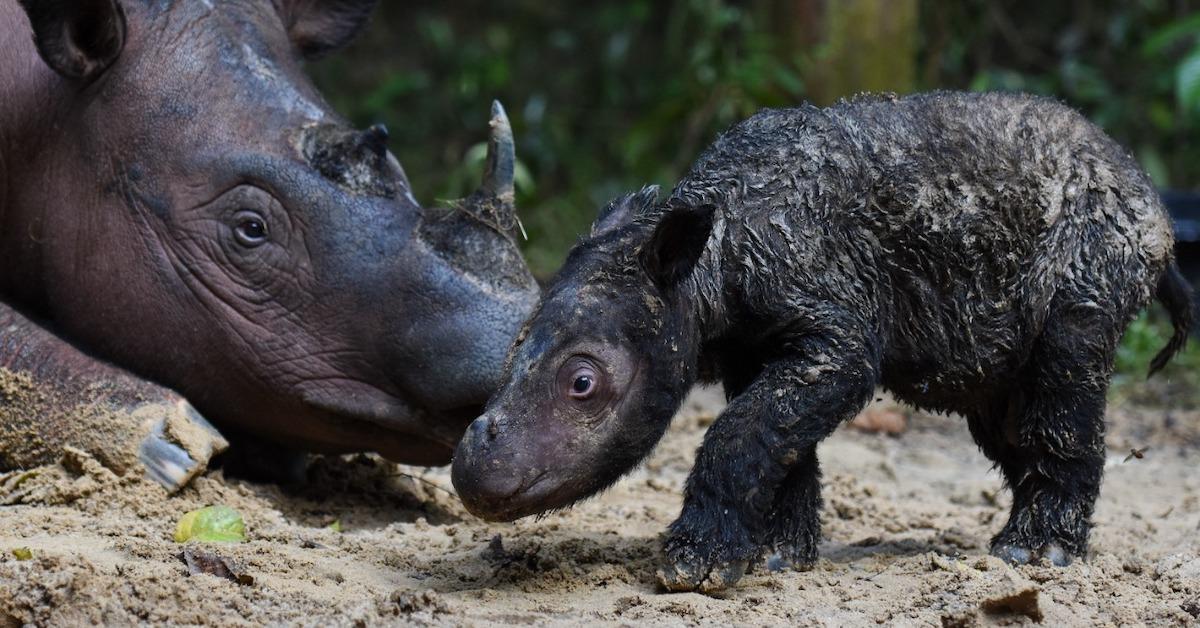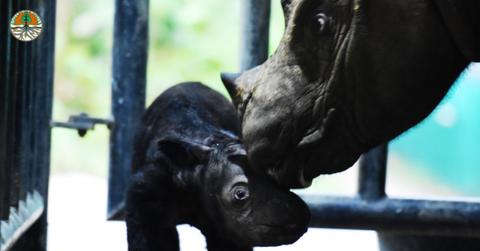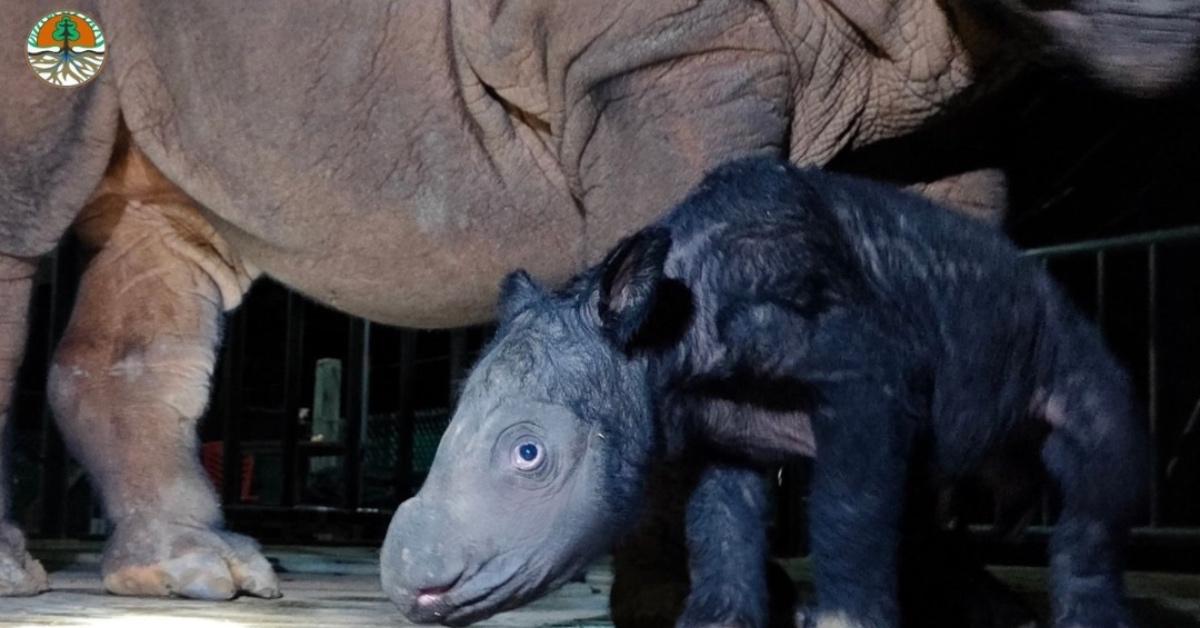Birth of a Baby Sumatran Rhino Provides Hope for the Critically Endangered Species’ Future
Updated Nov. 27 2023, 1:19 p.m. ET
The Gist:
- Sumatran rhinos are a critically endangered species, with an estimated 30 remaining in the wild, per the IUCN Red List.
- Wildlife sanctuaries across the globe are in a race against time to repopulate the species.
- The entire population of Sumatran rhinos currently resides in Indonesia, with the last rhino in captivity, a male named Harapan, was repatriated to the country in 2015 from the Cincinnati Zoo.
Baby rhinos… it doesn’t get much cuter than that.
In November 2023, a new baby Sumatran rhino was born at a sanctuary in Indonesia which is a huge win for the critically endangered species. Read on to find out why this adorable birth is such exciting news for rhino species — and why Sumatran rhinos are so endangered in the first place.
A baby Sumatran rhino was born in an Indonesian sanctuary in November 2023.
A Sumatran rhino named Delilah gave workers at the Sumatran Rhino Sanctuary (TNWK SRS) quite a shock when she appeared the morning of Nov. 25 with a male calf at her side. Delilah reportedly wasn't due for another ten days, making her sudden delivery extra unexpected, according to the Associated Press (AP).
While there is no word on the calf's name yet, he and his mother are both doing well and walking around.
TNWK SRS is located in Way Kambas National Park in Lampung Province, Indonesia, and is a sanctuary exclusively for the Sumatran rhinos.
Indonesian Environment and Forestry Minister Siti Nurbaya Bakar said in a statement that the sanctuary has seen five live births so far, per NBC News. "This birth is also the birth of the second Sumatran rhino in 2023. It emphasizes the government commitment of the Indonesian Government on the rhino conservation efforts in Indonesia, especially the Sumatran rhino."
A baby Sumatran rhino was also born in an Indonesian sanctuary in March 2022.
In March 2022, the Indonesian Ministry of Environment and Forestry announced in a press release that a Sumatran rhino named Rosa gave birth to a female baby Sumatran rhino on March 24. She was born in the Sumatran Rhino Sanctuary (TNWK SRS).
Rosa was transferred from the wild to the TNWK SRS in 2005. The staff has attempted to mate Rosa with males since 2015, and she became pregnant for the first time in 2017. Between 2017 and 2020, Rosa suffered eight miscarriages, causing her to develop uterine fibroids. She became pregnant for the last time in 2020, and after a 15 to 16 month gestation period, she finally successfully gave birth.

A male rhino named Andatu fathered the new rhino, and he lives in TNWK SRS along with Rosa, their baby, and other rhinos named Andalas, Bina, Delilah, Harapan, and Ratu. Andatu was born in the sanctuary in 2012, which made him the first Sumatran rhino to be born in captivity in Asia in 124 years, when a calf was born at India’s Calcutta Zoo.
The Sumatran Rhino Sanctuary aims to repopulate the critically endangered species.
The sanctuary was created to protect the critically endangered species, to be the subjects of research, and to be part of a breeding program to help repopulate the species, according to Save the Rhino International.
Though sanctuaries are technically classified as captivity, they are much nicer places for animals than zoos. As Save the Rhino International notes, rhinos at TNWK SRS “live a semi-wild existence” that evokes living amidst nature, but also keeps the animals greatly protected from poachers and predators.
Each rhino enclosure at TNWK SRS is about 30 acres in size, which is immensely more space than any animal is given in a zoo. The sanctuary is also filled with native plant species that rhinos enjoy eating, as well as mud wallows, which rhinos bathe in.

The Sumatran rhino population is extremely tiny.
Sumatran rhinos, who originally come from both Borneo and Sumatra, have only been found in Indonesia ever since 2019 when Malaysia’s last remaining Sumatran rhino passed away, as per Mongabay.
According to the IUCN Red List, there are only about 30 Sumatran rhinos left in the wild, with the population continuing to rapidly decrease. The International Rhino Foundation charity notes that poaching rhinos for their horns has been a key driver in the rapid decline of the Sumatran rhino population, which has gone down by more than 70 percent in the last two decades.
This article, originally published in March 2022, has been updated.

